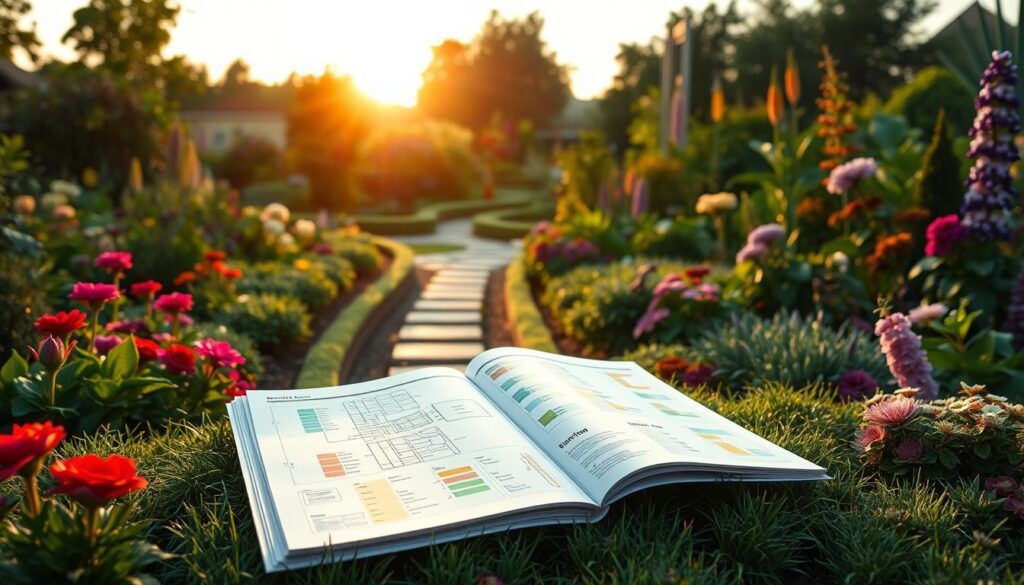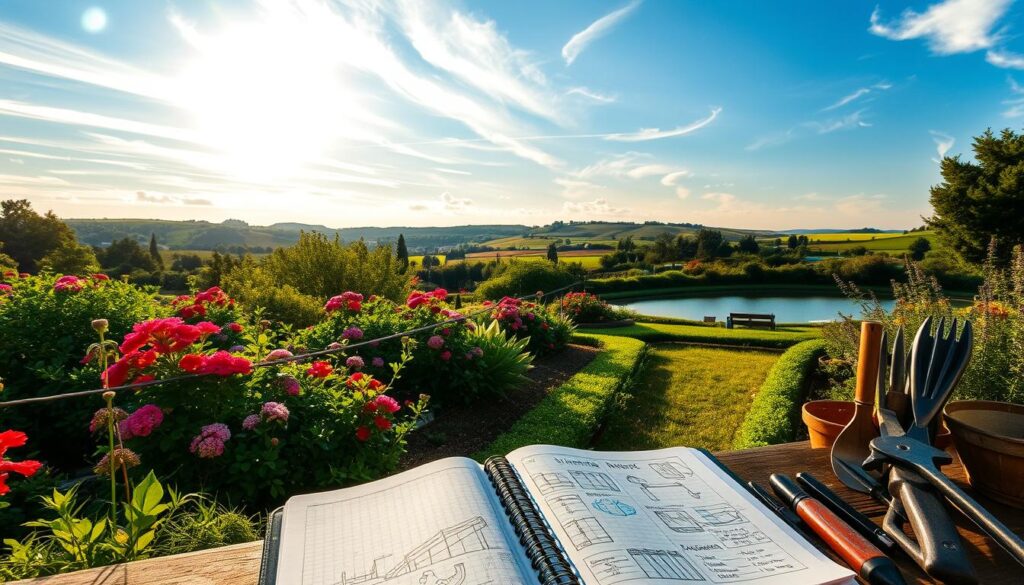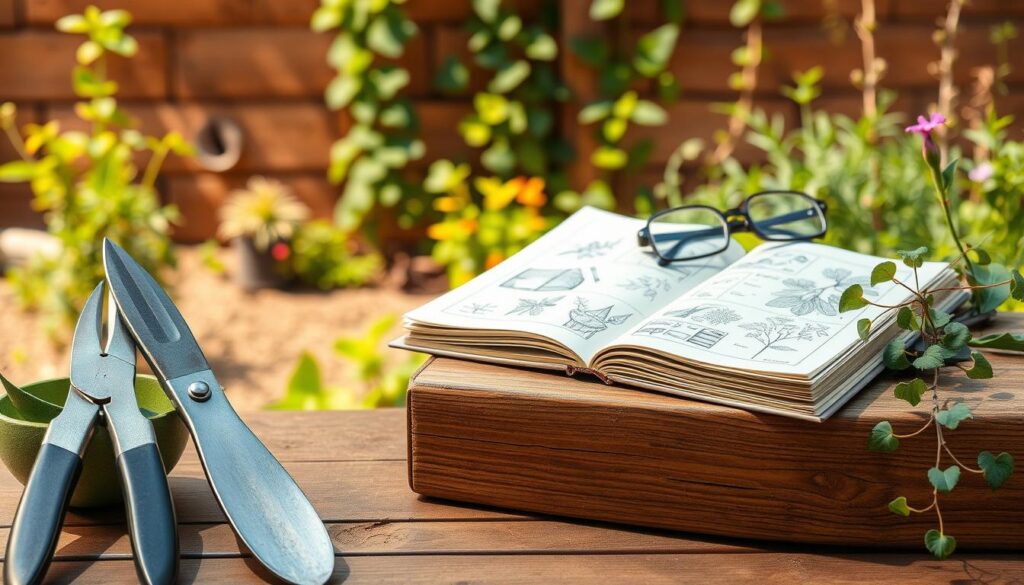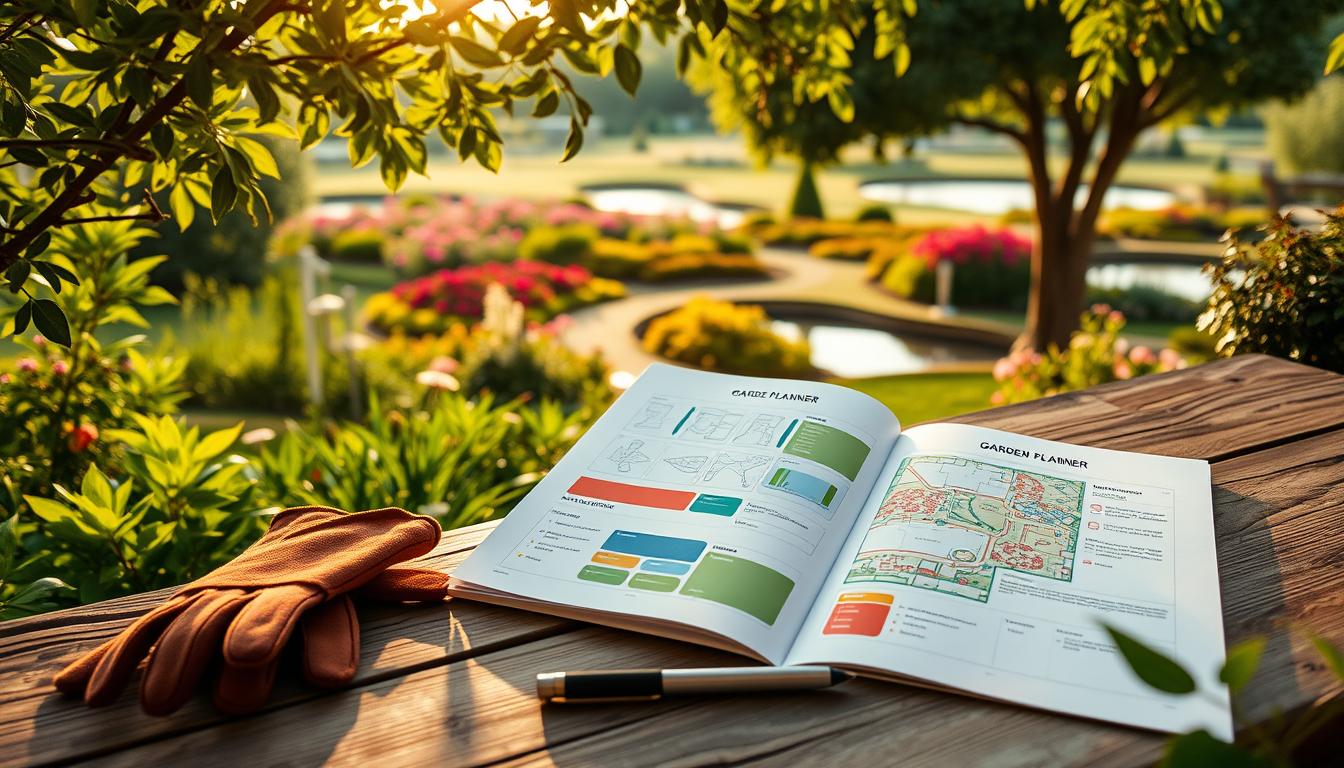Designing a beautiful and functional outdoor space can feel overwhelming. With so many plants to choose from and tasks to manage, staying organized is key. A reusable 38-page printable tool can help you plan garden layouts, track progress, and achieve your goals effortlessly.
This versatile resource grows with your space over multiple seasons. Whether you’re working with containers, raised beds, or large landscapes, it adapts to your needs. Track seed starts, expenses, and harvests to make informed decisions year after year.
Real-world examples show its practicality. Compare harvest yields, monitor seed viability, and create detailed plant profiles. Personalize your binder with decorative touches like washi tape for a unique, creative flair.
Key Takeaways
- Use a 38-page printable tool to design and manage your outdoor space.
- Track seed starts, expenses, and harvests for better organization.
- Adapts to container gardens, raised beds, or large landscapes.
- Compare harvest yields and monitor seed viability over time.
- Personalize your binder with decorative elements for added creativity.
Why You Need a Garden Planner PDF
Keeping track of your outdoor projects can be a challenge without the right tools. A structured system can help you stay organized and save time throughout the year. Whether you’re a beginner or an experienced gardener, a well-designed approach can make all the difference.
One of the biggest pain points is forgetting planting dates or overcrowding beds. With a detailed tracker, you can avoid these common mistakes. For example, one user shared how they avoided “file folder chaos” by creating organized plant profiles. This simple step made their planning process smoother and more efficient.

Monthly chore lists are another great feature. They ensure you never miss important tasks like fertilizing or pruning. By breaking down your workload into manageable steps, you can stay on top of things without feeling overwhelmed.
Cost-tracking is another benefit. Using an expenses worksheet, you can monitor your spending and make informed decisions. This helps you stay within budget while still achieving your goals.
Finally, integrating USDA hardiness zones into your plan ensures you’re prepared for frost dates. This feature is especially helpful for those in colder climates, allowing you to plan your planting schedule with confidence.
- Solve common pain points like forgotten planting dates and overcrowded beds.
- Organize plant profiles to avoid “file folder chaos.”
- Use monthly chore lists to prevent missed tasks.
- Track expenses to stay within budget.
- Plan frost dates using USDA hardiness zones.
Benefits of Using a Garden Planner PDF
Organizing your outdoor space doesn’t have to be complicated with the right tools. A structured system can help you stay on top of tasks, reduce stress, and achieve your goals efficiently. Whether you’re a beginner or an experienced enthusiast, a well-designed approach can make all the difference.

Streamline Your Garden Planning
Using a free printable tool can simplify your process. For example, square foot gardening templates can increase yield by up to 30%. Gridded layout pages with plant key symbols ensure accuracy and help you visualize your space better than hand-drawn plans.
Pre-made monthly chore checklists save time and keep you on track. One user shared how they avoided “intense overwhelm” by following a structured system. This approach ensures you never miss essential tasks like pruning or fertilizing.
Save Time and Reduce Stress
Seed starting trackers improve germination success rates, giving your plants a strong start in spring. Pest tracking sheets create actionable historical data, helping you address issues before they escalate.
By breaking down your workload into manageable steps, you can focus on enjoying your outdoor space rather than stressing over details. A clear plan ensures you stay organized and productive throughout the year.
How to Create a Garden Design with a Garden Planner PDF
Crafting a thriving outdoor area starts with a clear vision and the right tools. A structured approach ensures every detail is accounted for, from plant selection to layout design. Let’s break down the process into simple, actionable steps.
Step 1: Assess Your Garden Space
Begin by evaluating your outdoor area. Use the planner’s daily journal pages to measure sun exposure throughout the day. This helps you identify the best spots for sun-loving plants or shade-tolerant varieties.
Consider companion planting to maximize space and improve plant health. For example, pairing tomatoes with basil can deter pests naturally. This strategy ensures your bed is both productive and harmonious.

Step 2: Choose the Right Plants for Your Garden
Use the plant selection flowchart to decide between starters, direct-sow seeds, or nursery buys. This simplifies the process and ensures you’re selecting the best options for your space.
Perfect seed spacing is crucial for healthy growth. The dibble guide in your planner helps you plant seeds at the right depth and distance, reducing competition for resources.
Step 3: Map Out Your Garden Layout
Layering succession crops on seasonal planning sheets ensures continuous harvests. For example, plant cool-season greens in spring and warm-season tomatoes in summer. This keeps your bed productive year-round.
Protect your planner pages with sheet protectors for durability. This tip ensures your plan stays intact, even in outdoor conditions. Pairing Botanical Interests seed packets with planner codes adds an extra layer of organization.
Essential Tools for Garden Planning
Having the right tools can transform your planning process into a seamless experience. Whether you’re organizing your outdoor space or tracking progress, a well-structured system ensures efficiency and clarity. Let’s explore the essentials that will elevate your approach.
Printable Pages for Every Need
Printable pages are the backbone of any organized system. They include 19 core pages designed for tracking seed starts, expenses, and harvests. Optional supplements like a moon phase calendar cater to biodynamic growers, adding versatility to your binder.
Divider tabs can help you organize these pages for quick access. For example, an alphabetical index system for plant tags makes it easy to locate specific information. This setup ensures you stay on top of tasks without wasting time.

Additional Resources for Gardeners
Pairing your guide with a journal allows you to document progress photos and notes. This combination creates a comprehensive record of your journey. Recommended seed companies like Johnny’s and Baker Creek provide high-quality options for your projects.
Here’s a quick list of must-have tools to complement your planning:
- Soil test kit for optimal plant health
- Ergonomic dibble for precise seed placement
- Printable moon phase calendar for biodynamic practices
| Tool | Purpose |
|---|---|
| Soil Test Kit | Ensures proper nutrient levels |
| Ergonomic Dibble | Improves seed spacing and depth |
| Moon Phase Calendar | Aligns planting with lunar cycles |
For more tips on organizing your outdoor projects, visit NewGen Living. Their resources can help you refine your approach and achieve better results.
Tips for Successful Garden Planning
Planning your outdoor space effectively requires a mix of strategy and flexibility. By setting clear goals and tracking your progress, you can ensure a thriving and organized space throughout the year. Here’s how to make the most of your efforts.

Set Realistic Goals for Your Garden
Start by defining what you want to achieve. Use the SMART goal framework to create specific, measurable objectives. For example, “Preserve 20 jars of tomatoes” is a clear and achievable target. This approach keeps you focused and motivated.
Balancing perennials and annuals is another key strategy. Use plant profile sheets to plan which plants will thrive in your space. This ensures a mix of long-term and seasonal growth, keeping your area vibrant year-round.
Don’t forget to laminate frequently used pages. This simple tip protects your plans from wear and tear, ensuring they last for multiple years.
Track Your Progress Throughout the Year
Weekly journaling is a great way to stay on top of tasks without feeling overwhelmed. Jot down a few quick notes about what’s working and what needs adjustment. This habit prevents burnout and keeps you engaged.
Consider using a project tracker for larger tasks, like raised bed construction. One user shared how this tool helped them stay organized and complete their project on time. It’s a practical way to manage complex tasks.
Finally, test your seeds for viability before planting. This ensures you’re starting with healthy stock, leading to a more successful harvest. For more tips on getting started, check out this beginner’s guide.
Conclusion
A well-organized approach can transform your outdoor projects into a rewarding journey. With adaptable templates and expense tracking, your planner becomes a powerful tool for success. Whether you’re mapping out a new layout or refining an existing one, it saves time and keeps you on track.
Join online communities to share tips and hacks with fellow enthusiasts. These groups are a great place to learn new strategies and stay inspired. Consider upgrading your system with weather-resistant covers or digital tools for added convenience.
As one success story shows, even a small space can evolve into a thriving garden over three seasons. It’s a reminder of the “energy under the surface” that drives growth and creativity.
Ready to take your planning to the next level? Sign up for our newsletter to receive seasonal reminders and expert tips. Let’s make your outdoor vision a reality!

